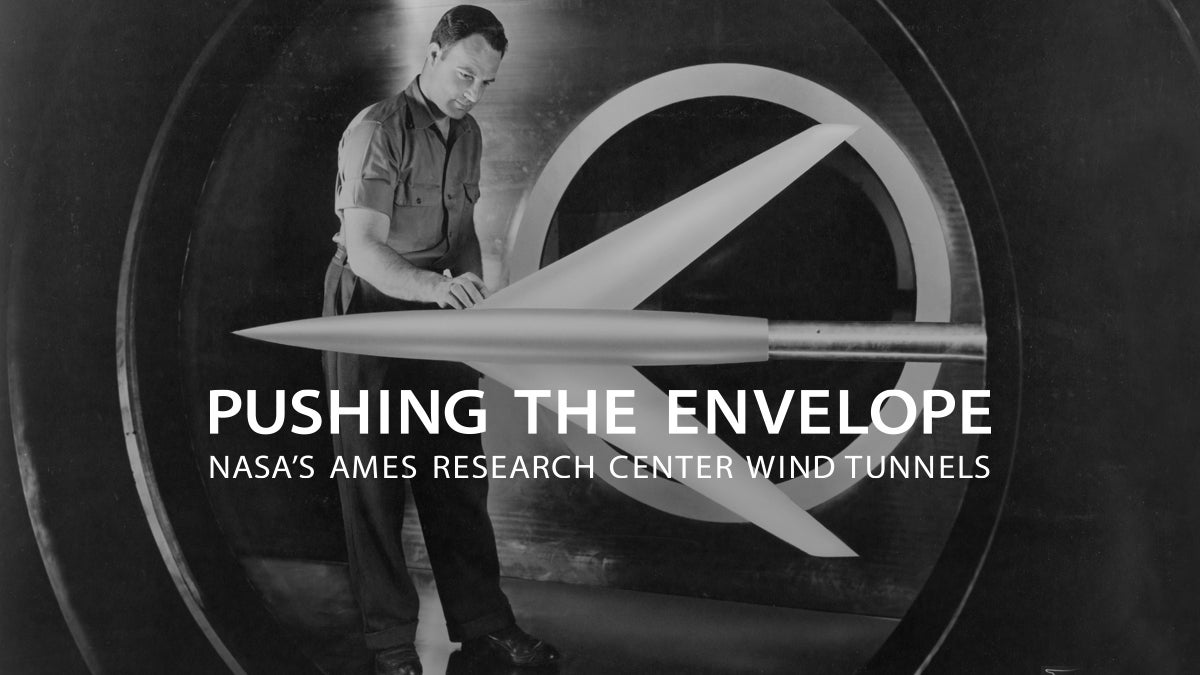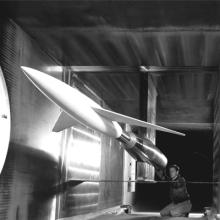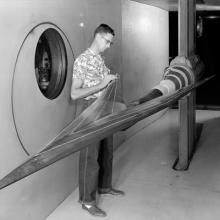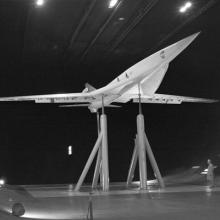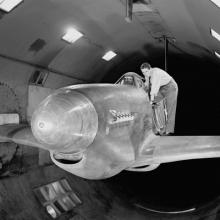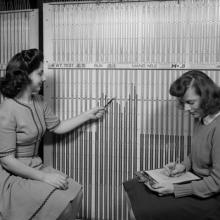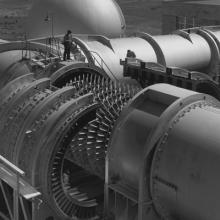Pushing the Envelope NASA’s Ames Research Center Wind Tunnels
Pushing the Envelope
NASA’s Ames Research Center Wind Tunnels
Just a little over three decades after aviators first took to the skies in fifty-mile-per-hour airplanes developed with crude wind tunnels, new high-speed aircraft designs were tested at velocities surpassing the speed of sound. By the 1940s, the pace of wind tunnel research in aeronautics was unprecedented, and the National Advisory Committee for Aeronautics (NACA) and its Ames Aeronautical Laboratory were leading the endeavor. Founded in 1939 at Naval Air Station Moffett Field near Mountain View, California, Ames was the second laboratory created by the NACA after the Langley Memorial Aeronautical Laboratory in Virginia, established in 1917. In 1958, Ames became part of the newly formed National Aeronautics and Space Administration (NASA). Named in honor of Joseph Sweetman Ames, a leading physicist and one of the founding members of the NACA, NASA’s Ames Research Center remains a world-leading wind tunnel facility for testing aircraft components, models, and airframes.
Wind tunnels have been vital to the development of aircraft since the dawn of flight. Contained test areas—a box, tube, or room—with air blowing through them, they duplicate flight conditions or the interaction between the air and an object flying through it. The legacy of achievements through wind tunnel testing and research at NASA’s Ames Research Center has been immense and includes developing the swept wing, testing numerous aircraft and spacecraft designs, and advancing our understanding of transonic (just below, at, and above the speed of sound), supersonic (above the speed of sound), and hypersonic (more than five times the speed of sound) aerodynamics. Completed in the 1940s, Ames’ first wind tunnels included several with supersonic testing capabilities and a gigantic complex to research full-scale aircraft designs. Since that time, NASA’s Ames Research Center has continued to construct and operate ever increasingly powerful and technologically-sophisticated wind tunnels. Today, a broad range of advanced wind tunnel facilities are operated at NASA Ames, including the National Full Scale Aerodynamic Complex—with the largest full-scale wind tunnel in the world—and pressurized supersonic and hypersonic wind tunnels.
This exhibition presents a collection of NASA photographs on four main themes within the history of Ames wind tunnel research: wind tunnel testing between 1948 and 1971; the full-scale testing of the first American SST (supersonic transport) designs in the 1960s; supersonic wind tunnel testing during the 1940s; and construction of the first Ames wind tunnels during World War II.
[image]
A swept-wing model in the 6 x 6 supersonic wind tunnel c. 1950
photograph
Collection of NASA
A-14218
R2022.2201.003
@SFOMuseum
#NASAAmesWind
© 2022 by San Francisco Airport Commission. All rights reserved.
